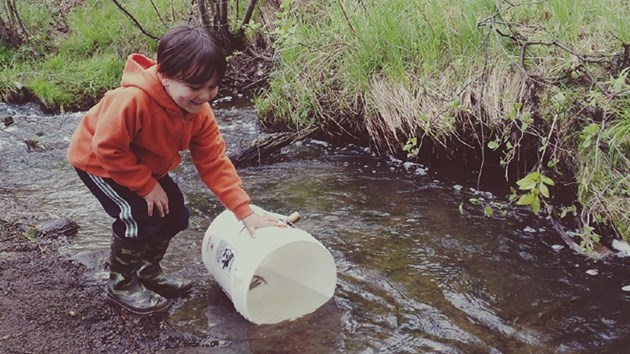After years of waiting, Greater Sudbury is moving ahead with studies of key watersheds in the community.
A public meeting is planned Wednesday, Feb. 15 at the McClelland Arena in Copper Cliff and Thursday, Feb. 16 at Terry Fox on Lasalle Boulevard to get public input on the Junction Creek Subwatershed study.
Greater Sudbury has 330 lakes within 25 watersheds that drain into Lake Huron. A $2.3-million grant from the province will allow the city to complete nine watershed studies over two years. The studies will assess the health of several Sudbury-area watersheds and make recommendations for their care.
A watershed is the land area that drains into a water body – whether it's runoff from rain, or streams that drain into a lake. Caring for and protecting watersheds is important because chemicals and other substances in the soil eventually drain into the water body and affects water quality.
Tony Cecutti, the city's of growth and infrastructure, said in its natural state, dead leaves and grass are substances that drain through the watershed.
"But as the area gets urbanized, that changes the quality of the water," Cecutti said, introducing a host of new compounds that get into the watershed.
The first step in the process is to characterize the watershed. That means getting not only an idea of the current state of the area, but what happens during storm events and the effect it has on the water.
"Flooding and that sort of stuff, that's another aspect that gets studied," Cecutti said. "And more modern watersheds also look at the ecology within the watershed. The whole ecosystem gets studied, because now we understand a subwatershed from a broader perspective.
"It's not just the water -- it's the natural plant and water life and the animals that rely on the watershed. It's a broader perspective, although it's principally focused on the water -- the storm runoff, the water quality."
The study will give an overview of the state of the watershed, how urbanized it is, how urbanization has impacted the watershed, the state of natural vegetation in the area, how those factors impacted the quality of the water going into the watershed.
"What are the necessary characteristics that we want to try to achieve?” he said. “What is, ultimately, the quality of water that we'd like to see in the subwatershed. And then what are the strategies we need to achieve those desired outcomes."
The assumption is that growth will take place in areas designated in the Official Plan. The watershed studies will help determine the best way to build in areas without harming the watershed.
"How do we manage growth so that it's not detrimental to the ecosystem?" Cecutti said. "The subwatershed (studies) can be informative in terms of the style of growth and how to manage that growth. What are the mitigation strategies to ensure that, as that growth occurs, we respect the ecosystem?
"Growth in the community actually creates a tremendous opportunity for the city to partner with the developer to implement a solution that mitigates the effects that have been ongoing for some time."
The meetings this week are being held from 4-6 p.m. Cecutti said they're hoping for a strong turnout. It's the first of four public consultations that will eventually end in recommendations. The process will take between one and two years.
"We're looking for input from the public to help us satisfy ourselves that we have properly characterized the watershed.,” he said. "We're also using these first sessions to basically explain the process that we're going through.
"In future meetings, we'll be talking about developing management objectives and targets. Then we'll develop and assess some alternative solutions. Then we'll be back a fourth time to discuss some of the recommended and preferred solutions."
A preview of the information that will be presented at the meetings can be found here.
